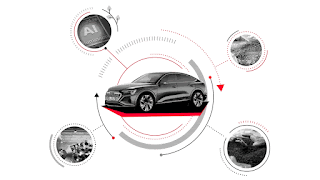Have good credit score, need quick money? Opt for unsecured loan
Since the interest rate is high and the loan tenure short, evaluate your repayment capacity carefully.
The Reserve Bank of India (RBI) recently asked Indian banks to be vigilant about their retail portfolios, particularly the rapidly growing unsecured loans-such as personal loans and credit card loans-provide quick access to money when it is urgently needed, they also carry risks for borrowers.
Borrowers who can’t offer collateral have to take recourse to an unsecured loan.”They are a good financial option for people who don’t want to offer collateral. If you are in need of urgent cash loan without documents, unsecured loan could be your go-to-option. You can also apply for a personal loan to fund a major purchase or an event, home improvement, or to pay down higher-interest debt.
Quick disbursal
Unsecured loans are disbursed faster than secured loans.”Bring pre-approved, loan against credit cards are disbursed on the very day of application. Personal loans usually get disbursed between two and seven days. Many lenders also offer pre-approved personal loans to their select customers based on their credit profile. Such pre-approved personal loans usually have instant or same-day disbursal.
Credit score taken into account
A salaried individual having a good credit score can get an unsecured loan easily.”Lenders consider the applicant’s repayments capacity. They usually prefer those applicants whose equated monthly installments (EMI) obligation, including that of the proposed personal loan, is within 50-55 percent of the monthly income. Those exceeding this limit usually have a lower chance of approval. Ideally, all your EMIs put together should not exceed 40 percent of your home income.
High-cost loans
Banks perceive these loans as risky because they are not backed by any collateral (in case the borrower defaults). Hence, they charge high rates of interest on unsecured loans. Leading lenders charge up to 24 % on personal loan.”Unsecured loans are usually offered at much higher interest rates than secured loans to mitigate the lender’s risk. This, combined with the shorter tenure of 12-60 months, makes the EMIs for these loans high.
Evaluate repayment capacity
Borrowers should be careful when availing of these high-cost loans. “Borrowers who may not qualify for a secured loan but have a robust repayment plan in place may consider unsecured loans instead. But, in doing so, they must keep the high interest rate and the penalty factor in mind. They should make sure they have a strong repayment plan, given the loan’s short tenure and the prepayments charges.
Prepayment fee tend to be high in the case of unsecured loans. Those who don’t have a stable income should avoid these loans. Failure to pay EMIs on time will attract penalties and impact your credit score. ”Decline in credit score will make it difficult to avail another loan in the future”.
Scout for a good deal
If you have no option but to go for an unsecured loan, then do scout around for a good deal.”Compare interest rates. Also check the processing fee, prepayments charge, and late payment fee. And read the fine print of the loan contract to understand all the details,”
Choose a tenure that is easy on your pocket and doesn’t disturb your cash flow cycle.
Look for alternatives
Try to raise money from some other sources before opting for an unsecured loan. If you hold fixed deposits, you can take a loan against them at a lower cost. Gold loans and loans against securities also tend to be disbursed fast.
A top-up loan on your home loan may take a bit longer. Do check the loan –to-value ratio and interest rate before going for these options.”Gold loan, loan against property, home improvement loans, and loans against fixed deposits are alternatives you can go for to raise money at short notice,”
PERSONAL LOANS ARE RELATIVELY EXPENSIVE
|
LENDER |
INTEREST RATE (% per annum) |
|
HFDC Bank |
10.50 to 24 |
|
ICICI Bank |
10.75 to 19 |
|
Kotak Mahinder Bank |
10.99 onwards |
|
IndusInd Bank |
10.49 onwards |
|
Axis Bank |
10.49 onwards |
For More Details: Pooja Manoj Gupta, visit www.giia26.com
Email: pmgiia26.com Mobile 8882286639

.png)














